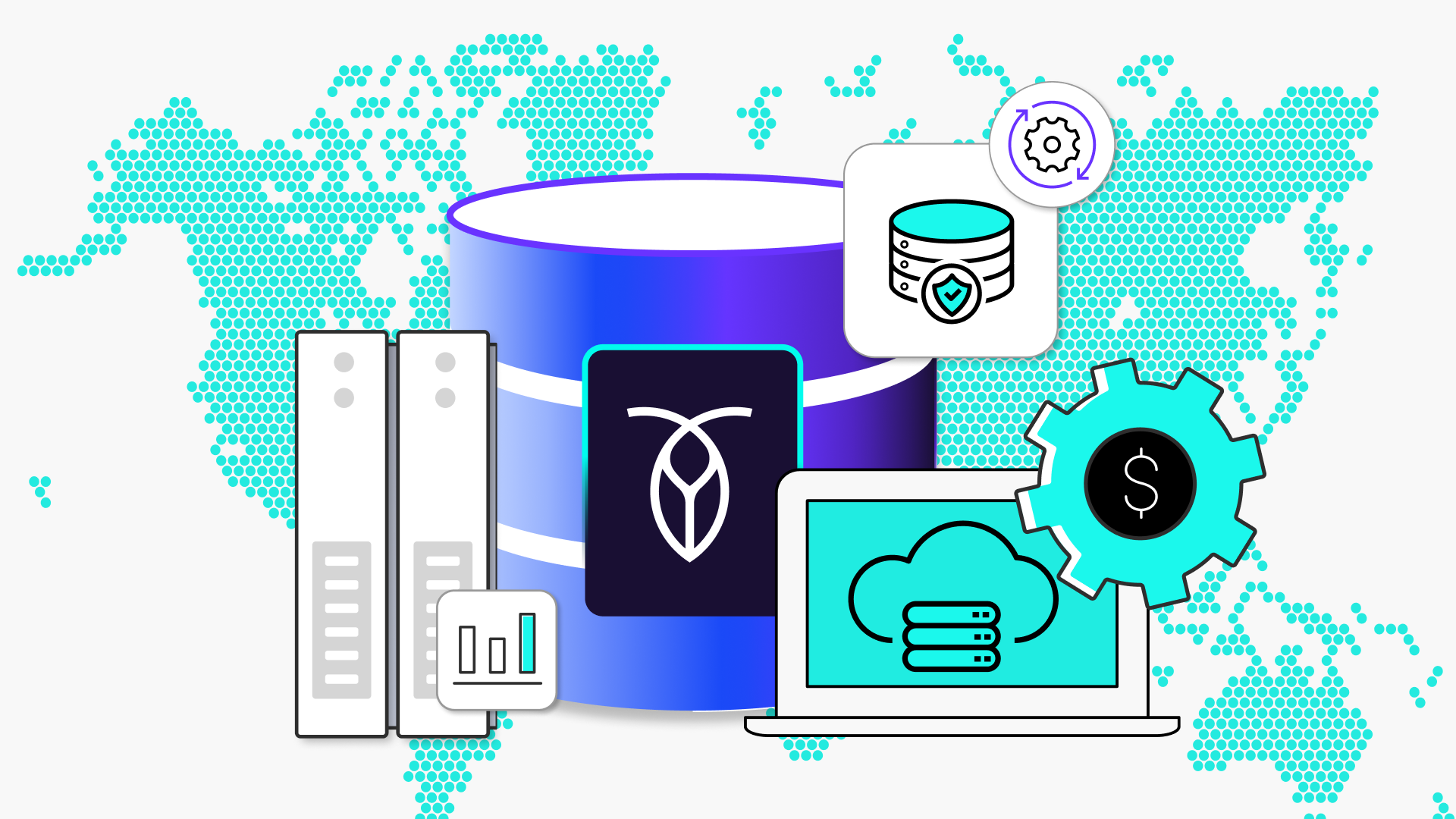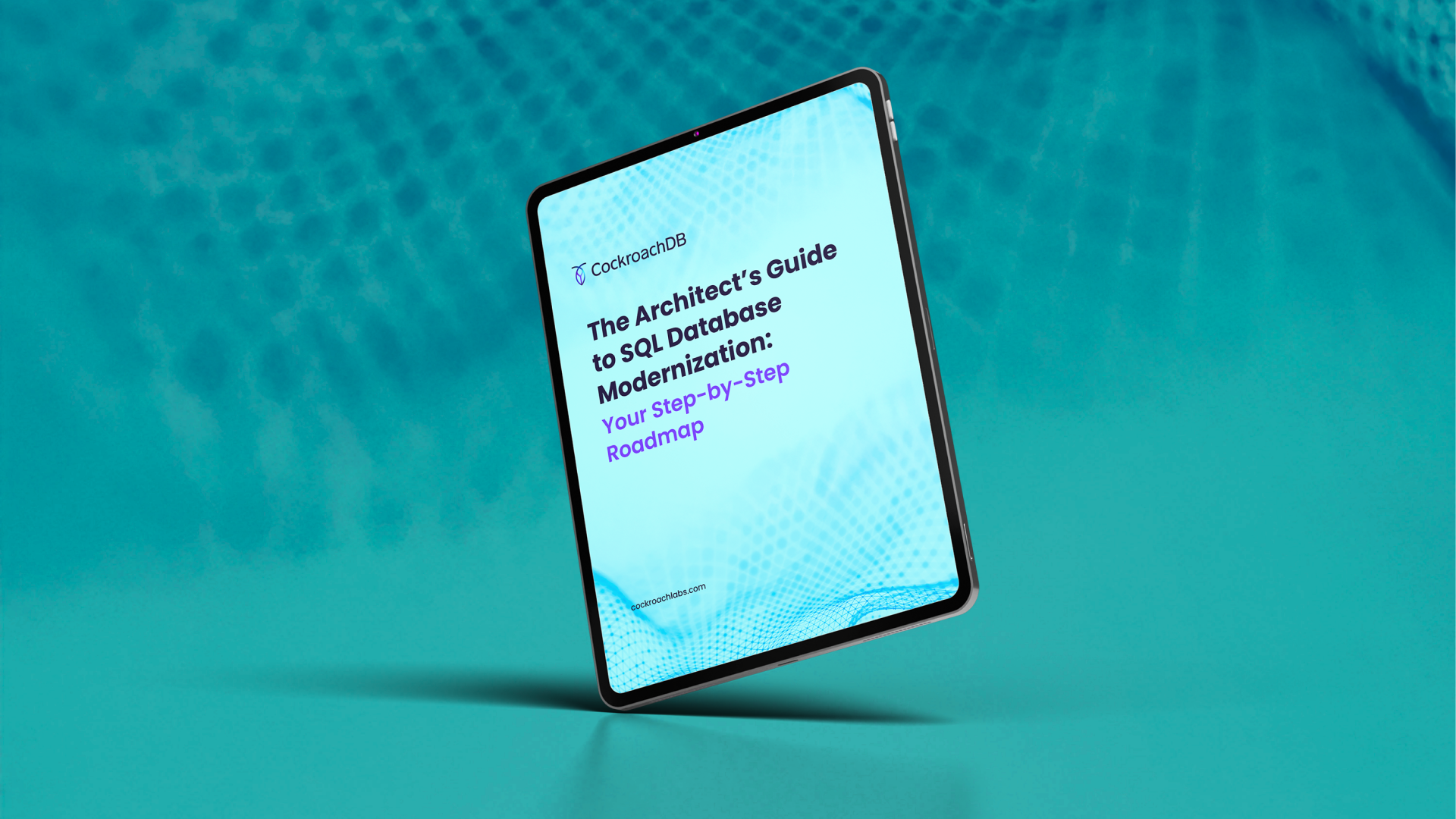Data modernization has been a critical aspect of technological evolution throughout recent history – it has simply taken on different forms based on the economic, business, and societal needs at the time. In a recent episode of Big Ideas in App Architecture, two expert Cockroach Labs sales engineers – David Joy and Jim Hatcher – discussed data modernization’s intriguing evolution, highlighting key shifts and trends that are unfolding.
Check out the full episode wherever you stream podcasts or on our YouTube channel below:
What has “data modernization” meant in the past?
Traditionally, data modernization has encompassed a wide array of topics, including:
Integrating new technologies and practices
Optimizing data architecture
Enhancing database functionality
It’s not simply about relocating data, but about reimagining how data will serve an organization in a competitive and evolving landscape.
For example, database management was once relatively straightforward, with systems like Microsoft Access and SQL Server being the go-to solutions for many organizations. These systems were sufficient for small-scale applications and departmental needs – however, as data volumes grew, their limitations became apparent.
Next, David and Jim recall when virtualization and the cloud entered the conversation, and the challenges of physical data centers started to fade into the background.
As Jim noted, “Our expectations just change. The things that used to be a challenge – you'd solve those and you got a sense of accomplishment out of that. And now those things are like nothing anymore. And then you have different challenges … So you just sort of shift focus over time.”
The shift to cloud, hybrid realities, and distributed systems
Even relational databases have changed dramatically in a relatively short span of time. 2024 marked 50 years of SQL, and the Google Spanner paper that introduced distributed SQL came out just 13 years ago in 2012. Fast forward to today, and global businesses need their data to be effectively distributed in step with their global customer bases. That said, it seems hard to imagine how relatively recently distributed databases have entered the realm of possibility for most businesses.
As cloud computing gained traction, organizations began to move their workloads to the cloud – a shift that brought on new challenges and opportunities. Enterprises began adopting cloud-native architectures, leveraging containerization and microservices to build scalable and resilient systems. The concept of disaster recovery evolved into disaster avoidance, with systems designed to be resilient and always available.
Where is data modernization headed today?
You can't get too comfortable with things in this industry ... I think one of the best ways to stay on top of things is to have a job where you work with a lot of clients and you're constantly seeing new clients and [saying], “What are you guys doing?”
– Jim Hatcher, Sales Engineer
As a sales engineer, Jim Hatcher is quite familiar with the current trends on enterprises’ radar: “Everybody I talk to is in some type of cloud journey and they might be early on or late on … some folks are saying, ‘We’re just trying to make our stuff cloud ready’ … And some people, you hear the terms ‘cloud-native’ or ‘cloud-first’ … like that's the end-all be-all right now.”
Looking ahead to 2025, Hatcher surmised that the cloud journey will continue to be on everyone’s minds, as well as AI and the “concepts of containerization and microservices, and the way we do ancillary services like logging and gathering metrics … But I also think we'll continue to see more people taking advantage of multiple clouds.”
Modernizing database infrastructure is crucial for businesses to stay competitive in today's rapidly evolving technological landscape. CockroachDB is a distributed SQL database that bridges the gap between traditional data systems and the cloud, offering unmatched resilience, effortless scalability, and the flexibility to evolve with business needs. By helping to navigate compliance, boosting business agility, and providing a future-ready platform, CockroachDB enables organizations to innovate and scale faster while reducing overall risk.
With features like PostgreSQL compatibility, active-active replication, and data domiciling, CockroachDB ensures data security and assists enterprises with navigating regulatory compliance. The platform's horizontal scaling and migration tools streamline app development, reducing time-to-value for cloud data infrastructure. CockroachDB supports seamless deployment across various environments, making it a robust solution for businesses at any stage of their cloud journey.
The Architect’s Guide to SQL Database Modernization: Your Step-by-Step Roadmap
Data modernization continues to be key for determining the best next steps for ambitious enterprises. A key subtopic within this is database modernization – ensuring that your data is stored, processed, and ingested as efficiently as possible, so your business can continue growing. As technology continues to evolve, so too will the strategies and tools used to manage and modernize your databases.
The key takeaway: Organizations must stay agile and ready to adopt new technologies to stay ahead in the ever-changing tech landscape. However, updating database infrastructure can be quite the undertaking, and it can be difficult to figure out how to even start thinking about moving decades of data off complex on-prem systems.
Now you can get an actionable checklist with expert tips and tricks to accelerate your database modernization journey: The Architect’s Guide to SQL Database Modernization: Your Step-by-Step Roadmap. Download your copy today!









